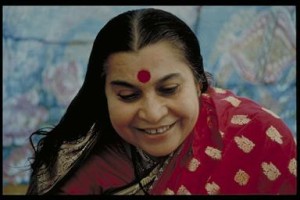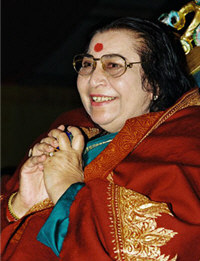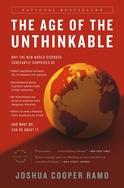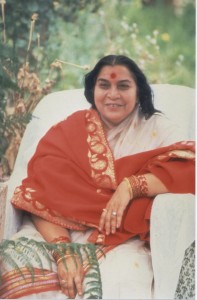Shri Mataji
 When you become the ocean, then you are not bothered what shore you go to, where you travel. You are not bothered. You are only with the ocean, moving up and down. That is how it is a living ocean of love, and that is what we have to develop – without dominating others, without showing off.
When you become the ocean, then you are not bothered what shore you go to, where you travel. You are not bothered. You are only with the ocean, moving up and down. That is how it is a living ocean of love, and that is what we have to develop – without dominating others, without showing off.
It should be that the whole thing should be contained within yourself…. It should be all within yourself, and that is the most enjoyable thing…. This is something that if you have it within yourself, you are fully filled within your Self. So what is most important? What is so much needed? Nothing. You are completely filled with yourself, contented with yourself and then you want to share. This is the ideal way of dealing with the Sahasrara, and I am sure the day will come when this whole world’s Sahasrara has to be opened out….
It is very important to understand how valuable you are, how remarkably important you are, born at this time. You got your Realisation for what? To emancipate this world, to transform human beings, to take the whole of this world into the realm of God. That is what you are here for.
Shri Mataji, 4 May, 1997

Shri Mataji
All our problems … are because of human beings because they have not been enlightened. If you are enlightened you will have no problem of any quarrelling or any fighting and all that. If you are enlightened, then you will think about others – others as if they are your own…. you will not think about yourself anymore. If you are enlightened, then there is no question of any violence in your head. Nowadays, in the name of religion, in the name of everything, there is so much of violence…
You should never be nervous. You should never be upset because you have the divine power within you and it will correct. It can correct anyone…. But you must have full faith in yourself and in the Paramchaitanya and believe that you are a realised soul. Nobody can harm you. If they try to harm you, for the time being, all right, you may suffer, but you don’t also feel the sufferings and you get out of it. Such a security, such a proper guidance is there. Also you are saved from all kinds of attacks and all kinds of mistakes that you commit.
It is all such a big, I would say a computer of knowledge. He knows, It knows what you are doing and what you should not do, where you are going and what should not be your way. It knows everything, knows everything about you.
So then you have to become aware of it. Now this is the stage where I would say that you have to be aware that you are realised souls. You are different, very unique. You are realised souls. You are not ordinary people and you are protected by this Paramchaitanya. Nothing can change you. Nothing can trouble you. Nothing can overpower you.
Shri Mataji, 9 May 1999
One has to know that there is a divine power. You may like it or not. All this living work that is done – millions and millions of flowers which are becoming fruits, a seed becoming a tree, a particular seed becomes a particular tree, all the choices that are made, the whole organised way the chemical acts, the way the chemistry is made of periodic laws – everything you see in this world is all so well organised, there has to be somebody doing it….
Unless and until human beings are evolved, none of the problems of the world are going to be solved, none of the problems – take it from me. Whatever they have done by their thinking – say they have created democracy, they have created communism, this, that – all this nonsense has no meaning at all in reality….
The detachment takes place because you become one with the spirit, which is not attached, which gives you that light, that detachment from where you can see the whole thing just as a drama going on. And you work it out very well. You become so dynamic that you are amazed at your own dynamism. Apart from that, one has to realise if there is a power which is an all-pervading power, that power itself thinks, organises and looks after you.
Shri Mataji, Brighton, 1982
 “Among the things our leaders seem to be missing is a comprehension of the staggering speed at which these change epidemics occur: one bank fails, then fifty; one country develops an atom bomb, a dozen try to follow; one computer or one child comes down with a virus, and the speed of its spread is incomprehensible.” (Ramo, 2009, p. 10)
“Among the things our leaders seem to be missing is a comprehension of the staggering speed at which these change epidemics occur: one bank fails, then fifty; one country develops an atom bomb, a dozen try to follow; one computer or one child comes down with a virus, and the speed of its spread is incomprehensible.” (Ramo, 2009, p. 10)
“We are entering a revolutionary age. And we are doing so with ideas, leaders, and institutions that are better suited for a world now several centuries behind us.” (Ramo, 2009, p.8)
“What we face isn’t one single shift or revolution, like the end of World War 2 or the collapse of the Soviet Union or a financial crisis, so much as an avalanche of ceaseless change.” (Ramo, 2009, p. 8)
Joshua Ramo is accurately describing the challenges we are facing in our daily lives in a time of rapidly accelerating change and uncertainty. Our present leaders are as disoriented and confused as we are and not able to identify the problems now facing us, let alone solve them. We need to find our own way to survive, and thrive, through the chaos.
Fortunately, there is a surprisingly simple solution. Sahaja Yoga is uniquely suited to giving us the ability to cope and even find peace of mind and enjoyment during these difficult times. Sahaja Yoga is a meditation practice developed in 1970 and described by its founder, Shri Mataji Nirmala Devi, as the final step in the evolution of human beings. It allows us to be still like the hub of a wheel while the outside spins and whirls dizzyingly around us.
Practising Sahaja Yoga meditation helps us to see the true situation clearly by getting rid of our biases and prejudices and allowing us to make an accurate assessment of the situation as it is. Unless we see the truth, we will not be able to develop an effective action plan, both personally and as a society.
Until now, too much emphasis has been placed on details and logical thinking and rationality – all activities of the left hemisphere of the brain – in making decisions, to the exclusion of the input of the right hemisphere. Better, more livable solutions are more likely to come from the right hemisphere: the emotional, the personal, the particular, the natural world, the vision of the whole, and intuition and inspiration. Sahaja Yoga meditation brings the left and right hemispheres of the brain into balance so that they interact effectively in decision-making in individual and collective issues.
Creativity is essential for finding workable solutions to the new and unprecedented challenges of our present age. Some of our old solutions may be able to be combined in new and creative ways to solve present problems. It is often in meditation that inspiration comes to us. Being in a state of silence, without thoughts, allows the inspiration to flow through.
Resilience is important in allowing us to cope well with whatever adversity comes our way. If we live a life that is grounded, well-adjusted and emotionally stable and we lead a healthy lifestyle, we are setting the groundwork to be able to withstand many upheavals. If we are flexible, adaptable and not attached to particular ways of doing things, and can live without whatever we don’t have, our chances of surviving various crises are much enhanced. In addition to helping us to achieve the above, Sahaja Yoga meditation gives us hope and quiet optimism and an acceptance that whatever happens is for the best.
So often, when stress in society becomes too great, the rule of law breaks down, and morals and decency disappear. Practising Sahaja Yoga meditation automatically makes you a moral person. During meditation you find out for yourself how you should behave. You don’t need anyone to tell you, and you know it so clearly, so thoroughly, so deeply within your own being that you don’t want to go against it. The meditation also gives you the strength to act only for the right, to be a moral person even when there is enormous pressure to act otherwise.
Sahaja Yoga is the ideal adaptation to an environment of constant change now prevalent in our society. It is a living process; it is not static. It is not based on a set of rules, but is fluid and intuitive and flexible, and gives us the opportunity to adapt to whatever circumstances are prevailing, always within a totally moral framework. It is not a break from the moral precepts of the past, but a progression towards their logical conclusion. It is not in competition with the institutions of the past, merely the next step in their evolution to a higher, more complete and integrated manifestation. Sahaja Yoga meditation is all you will ever need to survive and thrive in “the age of the unthinkable”.
Kay Alford
Ramo, JC. The Age of the Unthinkable, Little, Brown and Co, 2009.

